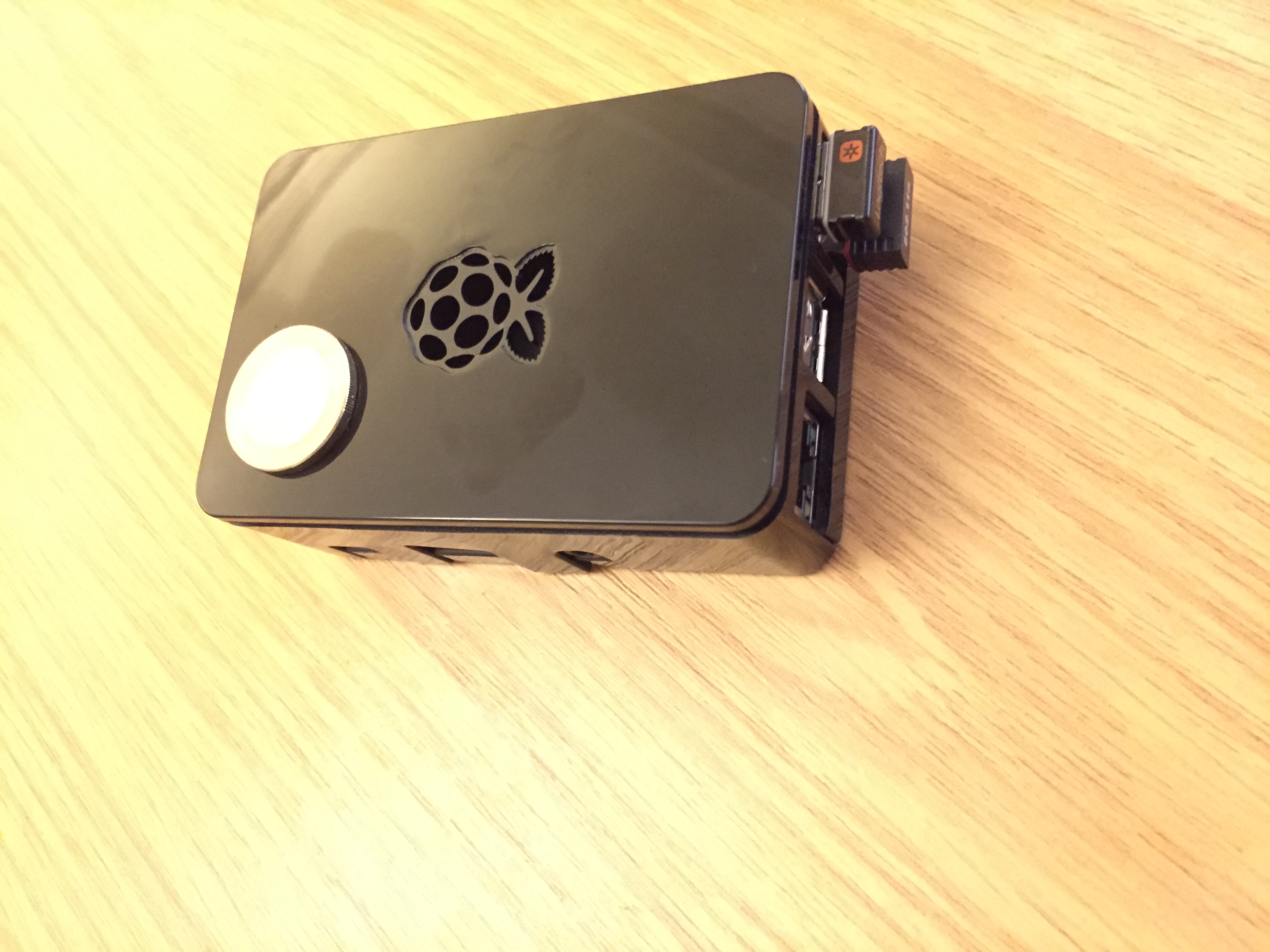Well, after a number of years I finally jumped on the Raspberry Pi bandwagon, and bought a new Raspberry Pi 2, and it was delivered last Sunday. I bought a starter pack on Amazon UK that included a HDMI, Ethernet, WiFi Dongle, a power supply and an SD Card with an installation NOOBS image. You can see the WiFi Dongle and my wireless keyboard/trackpad dongle in the picture. So all you need a monitor and keyboard/mouse/trackpad to get going, and once setup you can access remotely over the network at the command line.
My daughter and I were very impressed by how it is so small, that a €1 coin in the picture. But for a dinky little computer, but it packs quite a punch with a Quad Core AMD 7 and 1GB RAM. The Plex folks say it’s still better as a client rather than a video-transcoding server, if used as a media centre, and I may experiment with that in future.
I installed Raspbian (Debian-based distro for the Pi) and enabled IPv6 (just add “ipv6” to the kernel modules list “sudo nano /etc/modules” and restart), and after allowing remote SSH access in my IPv6 firewall I can now remotely login from anywhere around the world, yeah for IPv6. This works for me as I have a local IPv6 router at home, managing an address space that is routed over a dedicated SixXS tunnel, and in IPv6 the router does a similar job as a DHCP server in the IPv4 world, but the benefit is that all address can have a global scope and be unique in the world – so no need for NAT here.
I installed boinc and tried to setup SETI@Home, but SETI complained about the CPU architecture. In general I find this is often a good way to compare the processing of different machines as I can then track how well they do at crunching the SETI analysis. So if I’ve time I’ll come back to this and explore getting ARM7 to work (I may just have to enable the emulation of an older architecture). Boinc did give me some Whetstone and Drystone benchmark numbers as part of the setup to keep me happy.
Of all the things to do with a Pi I am most tempted by the BrickPi, but that would be a further investment in that kit and also a LEGO Mindstorms kit to get the value out of it, which kind of undermines the super-cheap ethos of the Pi itself, so I’m not sure just yet. Maybe a GoPiGo kit would suffice for playing with robots.
In the mean time I can use it to help teach my kids some programming, Raspbian comes with Scratch and Python setup nicely for easy access.
